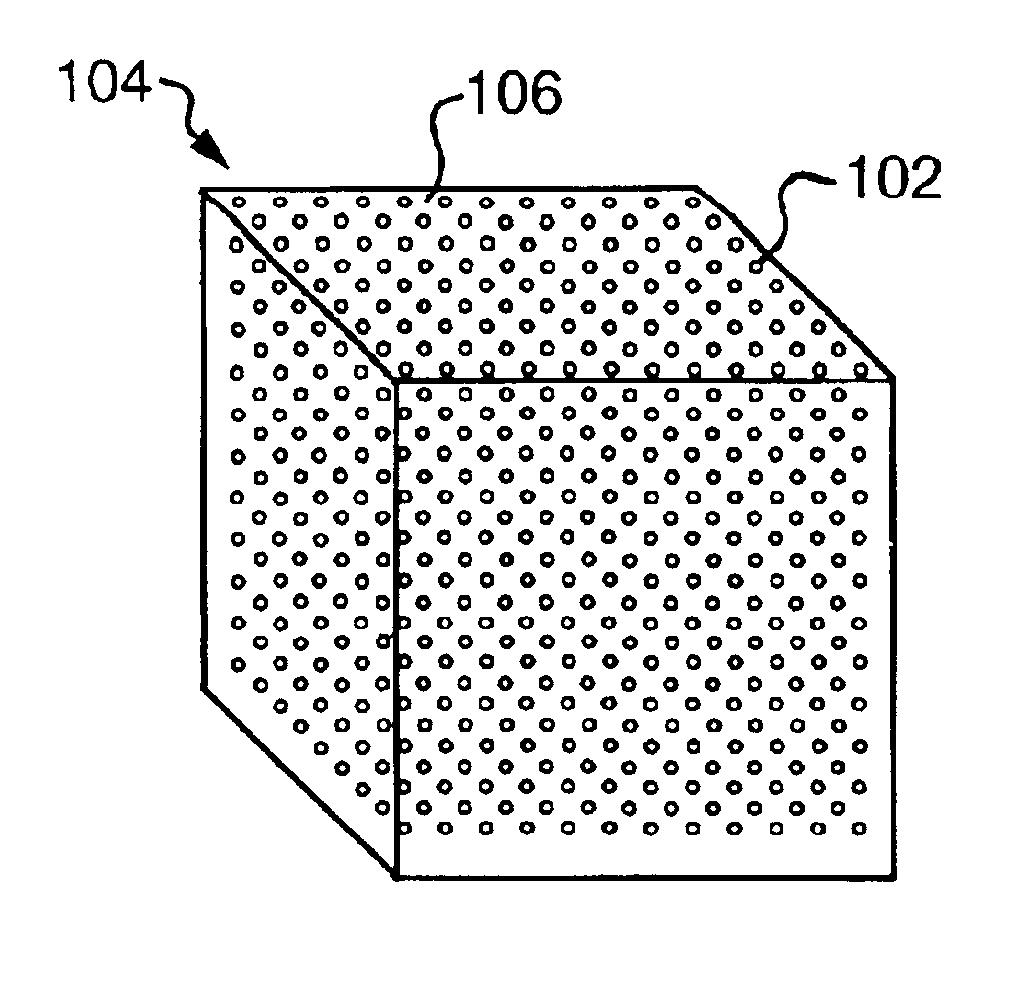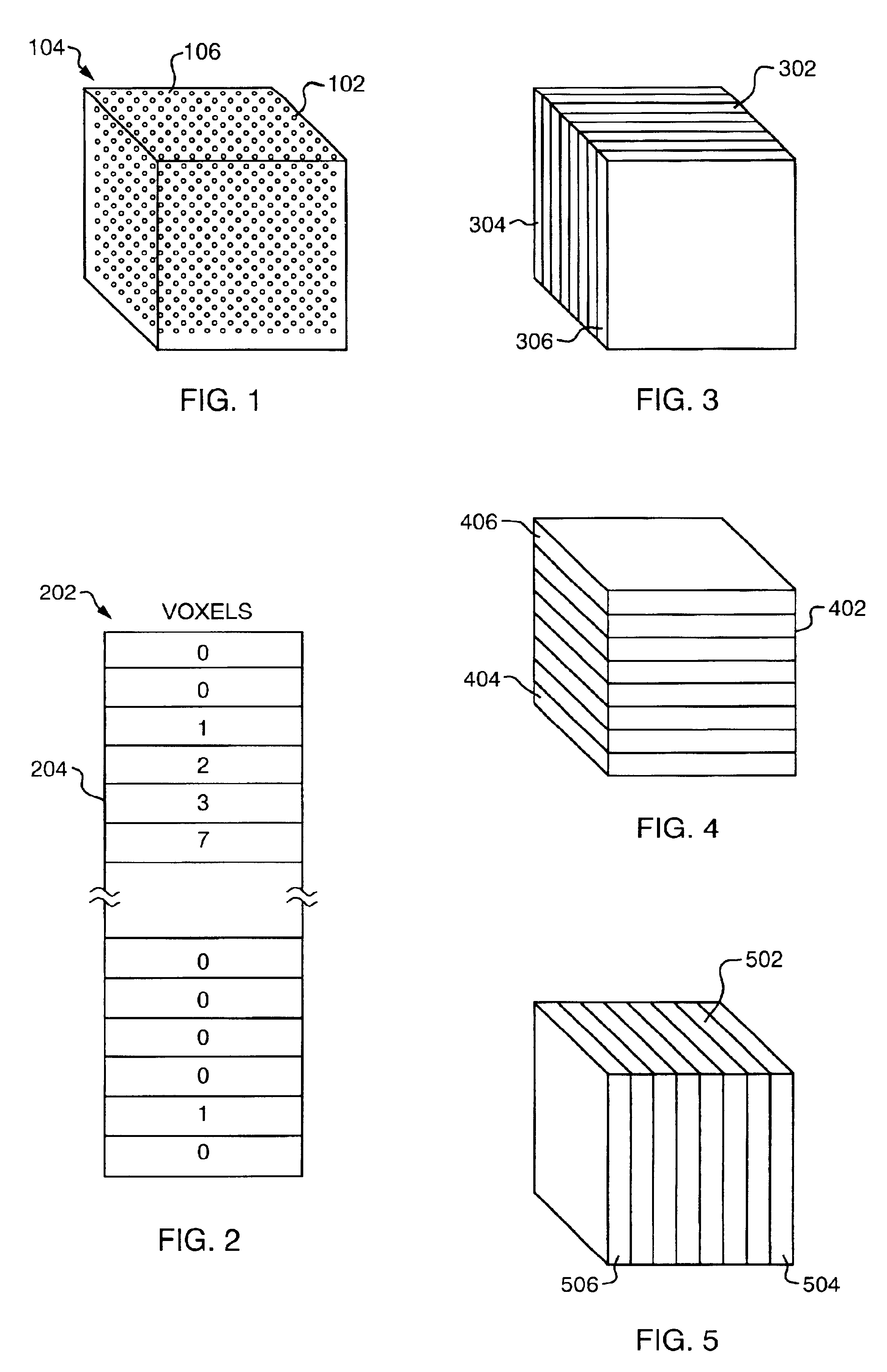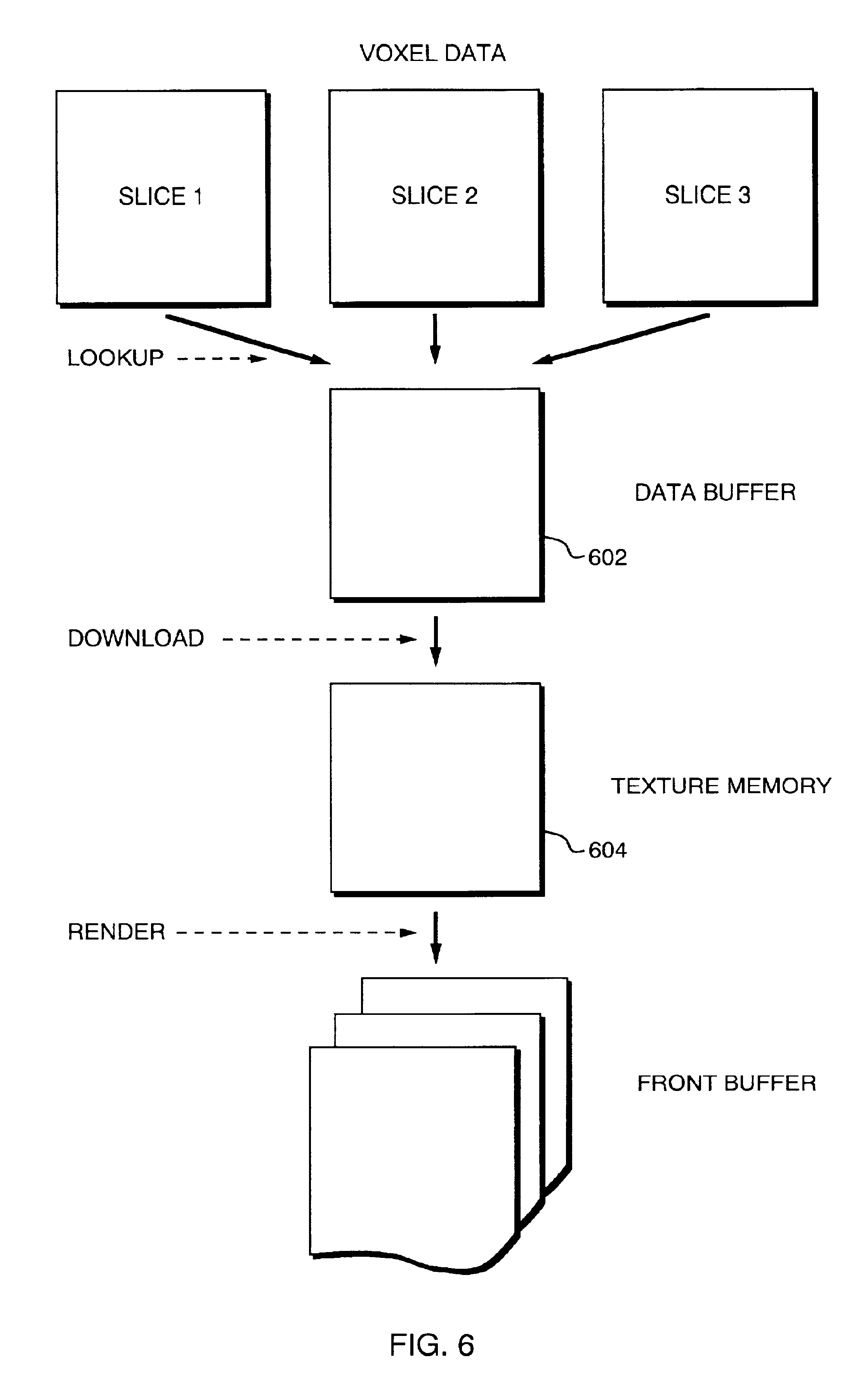Method and apparatus for visualization of 3D voxel data using lit opacity volumes with shading
a technology of volume and shading, applied in the field of computer graphics, can solve the problems of inability to tell if the object is elliptical, inability to determine the shape, orientation and relative positions of objects in 3d, etc., to achieve the effect of improving the visual quality of images
- Summary
- Abstract
- Description
- Claims
- Application Information
AI Technical Summary
Benefits of technology
Problems solved by technology
Method used
Image
Examples
Embodiment Construction
[0047]In the following description all reference numbers indicate in which Figure they are located. Thus, for example, reference number 1004 is found in FIG. 10, and reference number 1405 is found in FIG. 14.
[0048]Volumetric data volume is first partitioned into slices as illustrated in FIGS. 3, 4 and 5, and the slices each contain rows and columns of voxels, not seen in these Figures but seen in FIGS. 15-17. Volume rendering of the data may be speeded by reducing the number of voxels that are processed, downloaded and rendered by eliminating transparent voxels. Such volume rendering is taught in the previously mentioned U.S. Pat. No. 6,304,266 that is incorporated herein by reference.
[0049]In FIGS. 15-17 are shown a representative volume of voxels formed into a plurality of slices A-E and cells, as particularly applied to geoscience data, voxels are grouped into cells containing no fewer than twenty-seven alpha-numeric designated voxels (eg. A11, C21) and forming a cube. Other unde...
PUM
 Login to View More
Login to View More Abstract
Description
Claims
Application Information
 Login to View More
Login to View More - R&D
- Intellectual Property
- Life Sciences
- Materials
- Tech Scout
- Unparalleled Data Quality
- Higher Quality Content
- 60% Fewer Hallucinations
Browse by: Latest US Patents, China's latest patents, Technical Efficacy Thesaurus, Application Domain, Technology Topic, Popular Technical Reports.
© 2025 PatSnap. All rights reserved.Legal|Privacy policy|Modern Slavery Act Transparency Statement|Sitemap|About US| Contact US: help@patsnap.com



